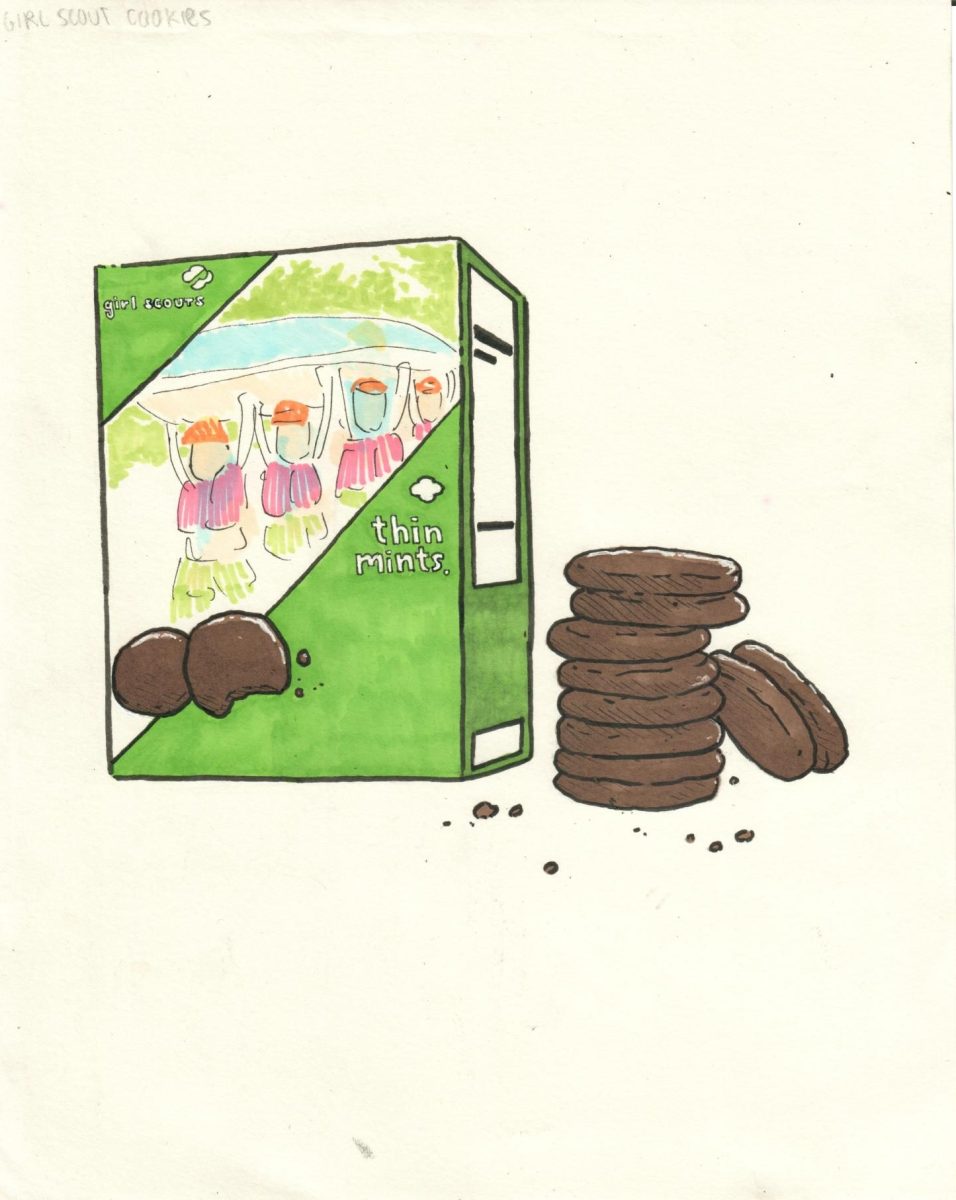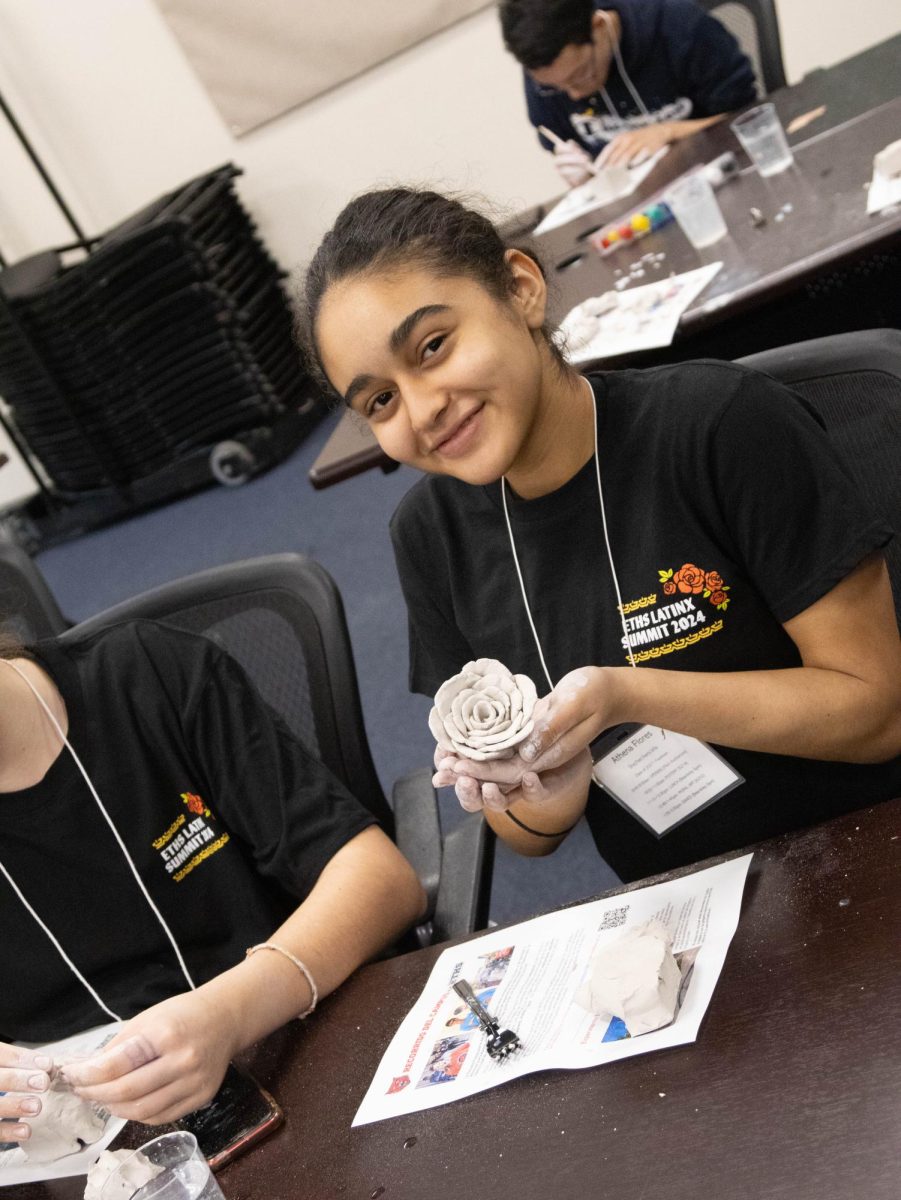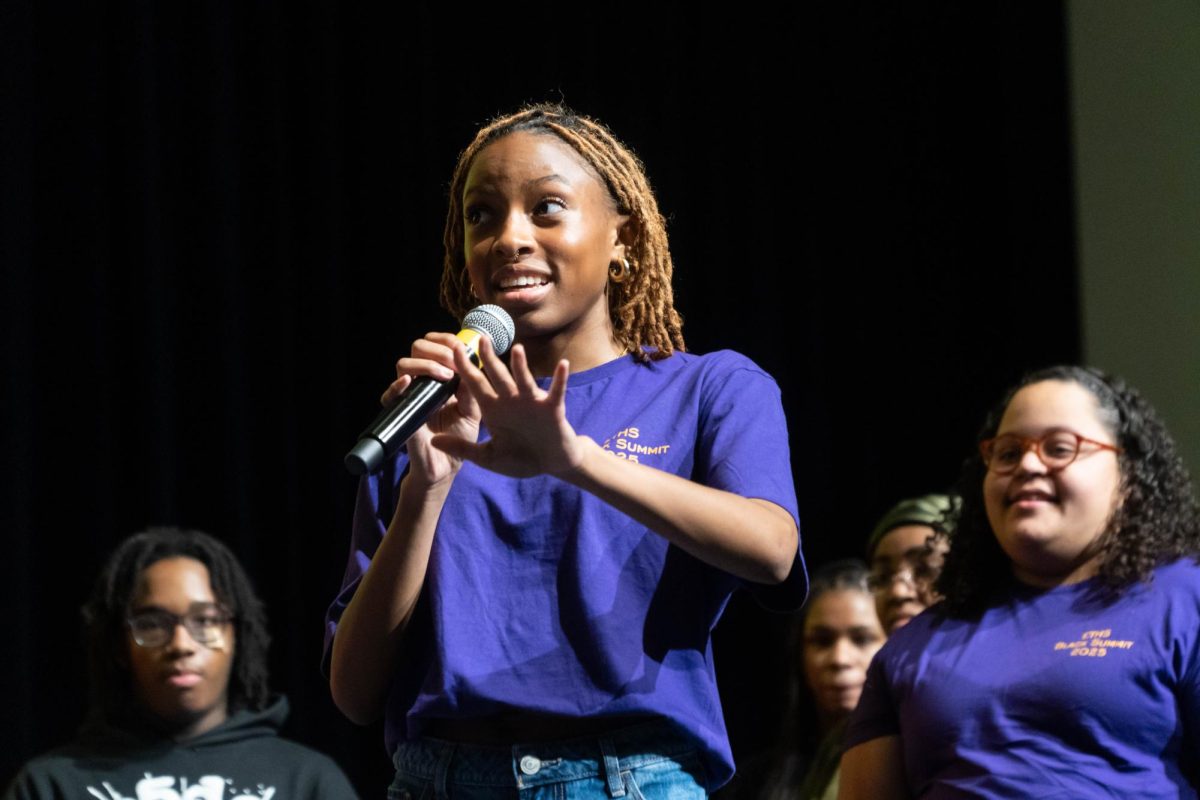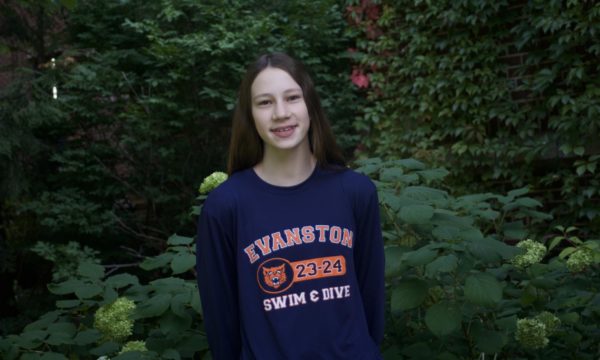The 2024 Climate Justice Conference, held annually by a collection of ETHS clubs and student groups, brought students at all levels of climate knowledge together on April 25 to share their ideas, learn from other community members and find ways to get involved in climate activism around Evanston.
“My main goal is just to make climate justice work accessible to students,” said Libby Greer, a senior at ETHS and leader of the planning committee for the Climate Justice Conference, or CJC.
Greer first became involved in climate action at ETHS through Emerge, a student leadership club. Her group’s project became the first climate panel, and she went on to join E-Town Sunrise, a youth activism group that is also part of a larger organization around the country. Greer sees the CJC as the collective effort of many climate-related clubs in ETHS, though most CJC committee members come from E-Town Sunrise.
“It’s kind of a meeting place for a bunch of different organizations who do work separately,” Greer said.
The planning process for the CJC begins in late January or early February, beginning with major decisions like the date of the fair and the speakers who can come, and then narrowing down to smaller details as the date of the event approaches.
“It’s a lot of emails,” said Greer.
A critical piece of the planning process is incorporating feedback from the previous year’s CJC and looking at what attendees would like to see.
“We do try to collect data after [the CJC] to see what people think, and I think there are certain times when we can tell that people are engaged,” said junior Eli Coustan, another member of the planning committee. “One of the ways we started the conference this year was actually a suggestion from an attendee last year.”
Coustan, similar to Greer, first became involved in the CJC through Emerge, eventually joining the planning committee where he organized workshops for the event.
The structure of the CJC has stayed similar over the years; this year’s began with a full-group introduction before students broke into focus groups, listened to two speakers, visited workshops and the Eco Fair and conversed with a panel of Evanston’s leaders.
“We had different focus groups based on how much people knew about climate change and climate justice,” said Coustan.
This idea of dividing people by experience level was a suggestion from last year’s participants, and seemed to help engage students who attended before they listened to two guest speakers with important perspectives on climate change and activism. Trinity Colón, a youth activist and student at Northwestern, and Justin Gillis, a well-known climate journalist, shared their thoughts with the students.
“They’re both very valid perspectives, and I think it was really cool to see the contrast,” said Greer. “Then there were workshops, like one I ran called Climate Justice 101, which really started at the beginning with ‘What is climate change?’ ‘What is the greenhouse effect?’ Anyone, regardless of experience, could get involved, be informed, and just level up from wherever they were at.”

Students chose two of these workshops to attend as well as the Eco Fair, a civics fair-style event with fourteen organizations in the Hub that students could learn about. A five-minute timer encouraged students to rotate and find many new organizations to talk to while also allowing for deeper conversations and interactive activities.
“People go to an organization that they’re interested in [and] talk to them,” said Coustan. “The goal of the rotations was to get a little bit deeper into the perspectives.”
The final stage of the 2024 CJC was the climate panel, which has always been a part of the event. The planning committee invites local leaders in climate change from the City of Evanston as well as local activists and speakers from climate-related organizations. While Greer, Eli and others involved in planning the event prepared questions and moderated the discussion, attendees were also encouraged to ask questions into a microphone passed around at the end.
“In my opinion, the main point of the panel is to allow the students there to ask questions,” Greer said. “I think especially with the politicians, it’s a good way for youth to communicate with city leadership in a way that they usually can’t.”
15 of about 150 students at the CJC asked the panel questions through an online form or the microphone that was passed around, a sign that attendees were engaged and interested in what the speakers had to say.
“The fact that about 10 percent of them took the initiative to go and ask a question shows to me that we did have pretty good engagement there,” said Coustan.
The event was not perfect, as there were a few scheduling issues and some difficulty in engaging everyone at the conference. Three field trips—the physics Six Flags trip as well as a Chinese field trip and a trip for Art History were on the day of the CJC, limiting the students who were able to attend.
“With school summits and conferences, there’s always the challenge of why people are signing up; there are always going to be people who are there because they want to get out of class,” Greer said. “We struggled to get them engaged sometimes.”
Despite these setbacks, the conference was deemed a success, and the planning committee and E-Town Sunrise are looking toward the future as they also consider their original goals for the event.
“I wanted to frame it as something for anybody, regardless of their experience level,” said Greer. “Everyone in our generation cares at least a little bit about climate change, I hope, because we know it’s going to affect us, so I really wanted it to be a space where anyone could come expand their knowledge and get involved.”
Coustan still has one more year with the CJC and is focused on the overall impact as well as the impacts on each individual student who learns something from their experience.
“Next year we’re continuing to work on engaging students, engaging organizations and just having a bigger impact on the school overall,” Coustan said. “Maybe you realize it’s an issue and maybe when you’re voting in an election in a few years, you know that that’s something you want to keep your eye on.”
This year’s Climate Justice Conference was Greer’s last, and she hopes it will continue and expand in the years to come.
“My hope, as someone who’s graduating, is that it’s something that will continue,” said Greer. “We hope to expand our impact and make it a part of ETHS tradition, something that happens every year.”







